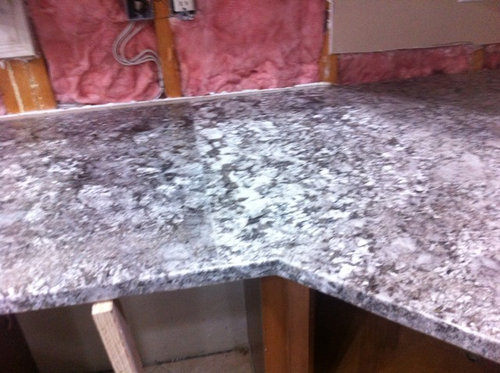Both 2cm and 3cm have these characteristics.
Adding seam granit after being laid.
The seams dont look perfect but volga blue is a very brittle stone that chips easy in fabrication so this seam looks acceptable from that stand point.
For a granite countertop apply an even coat by a paint pad brush or roller and allow the sealer to penetrate the surface for 15 to 30 minutes.
Butter the edges of your granite with your activated epoxy.
Judging from your photo the sink run looks to be way longer than a standard slab then add the fact that you chose the super fragile volga blue as your stone there looks to be no way out of a seam.
Then they will use an epoxy at the seams to cement the pieces of marble granite soapstone or quartz to each other.
Note that some stone is more porous than other and might require a second application.
If the sealer has been absorbed by the granite after the first coat simply repeat the first step.
Once the cabinets are found to be within the permissible levels our installers will lay the pieces of the granite in place on the counters.
But they harden quickly after being mixed.
Aligning the seam and adding clamps 1.
However a 2cm slab of granite is more prone to weakness as a result of them.
You can put seams in sink cutouts but this may make the seams more obvious and constantly under use and stress.
Putting the granite in place setting the seams and caulking.
Lay the 2 pieces of granite side by side.
You ll have 10 minutes or fewer to work with the mixed epoxy before it hardens.
Cooktop cutouts are good seam locations.
After all the thicker the stone the stronger it will be and the less susceptible to damage.
You can save stone while minimizing the size of the seams.

